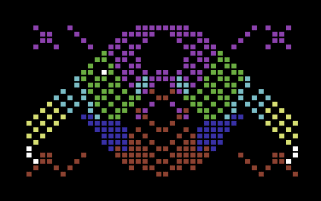- Home
- Programmers
- Jeff Minter
Jeff Minter
- By TCZ webmaster
- Published 11/11/2007
- Jeff Minter
- Unrated
|
Jeff Minter was fascinated by the ability of mathematical algorithms, to
produce startling colour patterns, which when accompanied by music
created a new kind of audio and visual experience. It was an
interesting possibility and Jeff initially used a very small piece of
code no more than 1K to experiment. He was impressed by the result and
set out to develop the code further. Jeff's first release was titled 'light synthesiser' but interest in it was rather limited and reviews were not favourable. This did not deter him and eventually Jeff released a more capable version of the idea called 'Psychedelia' which was ported to all the major 8-bit computers. He even used the program at computer shows with accompanying music to attract visitors to the Llamasoft stand. The software should not be confused with modern day screen savers with randomly drawn patterns, as the graphics are controlled by input from the user. |
 Llamasoft Psychedelia Advert |
 Llamasoft Colourspace Advert |
'Psychedelia' was only the first step. Jeff would push the software much further, with the release of Colourspace, using the colour capability of the Atari 800 XL. With the arrival of 16-bit computers like the Atari ST, it was possible to expand Colourspace with extra features, taking advantage of the more powerful 16-bit hardware. Eventually this evolved into Trip-A-Tron which was released on the Atari ST and Amiga. Jeff clearly has a passion for light synthesis software and sees it as a novel form of entertainment. It is not surprising that over the years he has continually found ways to refine and implement his concepts on new computer hardware. Probably the definitive version of this software is Neon, which is built into the Xbox 360 (see Mama Giraffe page for more information). |
 Psychedelia by Llamasoft |
 Trip-A-Tron by Llamasoft |



